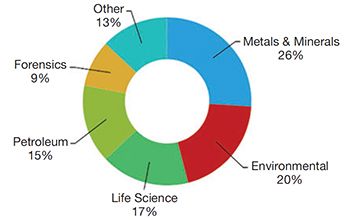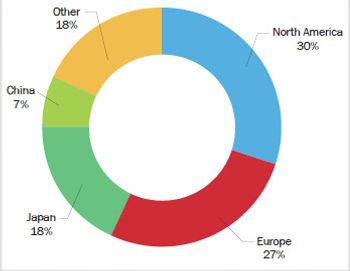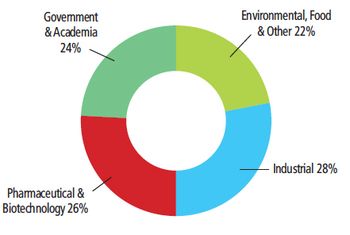
- Spectroscopy-12-01-2013
- Volume 28
- Issue 12
Market Profile: Elemental Analyzers
While some atomic spectrometry systems can generally detect and quantify any element in the periodic table, other instruments are specifically designed to measure only one, or at most a few, elements of interest in a particular application.
Market Profile: Elemental Analyzers
While some atomic spectrometry systems can generally detect and quantify any element in the periodic table, other instruments are specifically designed to measure only one, or at most a few, elements of interest in a particular application. Various underlying technologies are used, but one of the most common is combustion followed by detection using fluorescence, infrared spectroscopy, thermal conductivity, or electrochemical methods. Sample preparation and treatment are optimized for measurement of the targeted element.
The largest product segment is focused on metal samples, commonly analyzing steel, aluminum, and other alloys. Instruments of this type measure one or more of the following elements: carbon, sulfur, hydrogen, nitrogen, and oxygen. The second largest elemental analyzer product segment is for total organic carbon (TOC) instruments, which often include the option of total nitrogen. The primary applications for TOC are in testing drinking water and other pure waters for carbon, which serves as a measure of organic contamination. The health and environmental effects of mercury lead to many applications for mercury analyzers. Some protein analyzers use the presence of nitrogen to act as a proxy for protein content. These nitrogen–protein instruments can be "fooled" by other nitrogen sources, as happened in the cases of melamine adulteration in Chinese baby formula that were discovered in 2008. The remaining quarter of the market for elemental analyzers is made up of a wide variety of less-common instruments. Examples include specific analyzers for arsenic, halogens, and various combinations of the primary organic elements.
Elemental analyzers by type - 2012
The foregoing data were adapted and extracted from SDi's market analysis and perspectives report titled Global Assessment Report, 12th Edition, October 2012. For more information, visit
Articles in this issue
about 12 years ago
PIKE Technologiesabout 12 years ago
Amptek, Inc.about 12 years ago
Ocean Opticsabout 12 years ago
Photonis USAabout 12 years ago
Reducing Background in Surface Enhanced Raman Scattering Measurementsabout 12 years ago
Shimadzu Scientific Instrumentsabout 12 years ago
Milestone, Inc.about 12 years ago
Savillex Corporationabout 12 years ago
WITec GmbHNewsletter
Get essential updates on the latest spectroscopy technologies, regulatory standards, and best practices—subscribe today to Spectroscopy.




